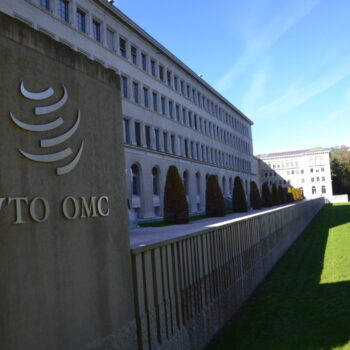In late 2022, seven European countries decided to withdraw from the Energy Charter Treaty (ECT). They concluded that efforts to reform the Treaty remained incompatible with their climate goals. There are around 3,000 similar treaties globally that allow international fossil fuel investors to sue governments for climate policies. Countries need to collaborate to tackle challenges from existing investment treaties while designing new approaches that promote the energy transition.
The ECT is one example of international investment treaties that include investor-state dispute settlement (ISDS). ISDS was designed to protect foreign investors from excessive interventions by host states. However, it has limited countries’ right to regulate, even when pursuing legitimate public policy objectives. ISDS gives foreign investors access to international arbitration tribunals, where they can challenge government policies if their business interests are affected.
Aware of these constraints, countries are increasingly moving away from ISDS. Some recent free trade agreements (FTAs), such as the Regional Comprehensive Economic Partnership (RCEP) and the UK-New Zealand FTA, do not include ISDS. The United States and Canada have removed ISDS between themselves within the United States-Mexico-Canada Agreement (USMCA). In 2015, Brazil developed an alternative approach to governing foreign investments without ISDS.
Why do investment treaties hinder climate action?
To keep global warming below 1.5°C, investments must urgently shift from fossil fuels to clean energy. According to the International Energy Agency (IEA), to achieve net zero by 2050, annual private investments in clean energy must increase by 350% by 2030. In this scenario, global fossil fuel demand would decline rapidly within this decade – the IEA is clear that no new projects to extract fossil fuels are needed from 2021 onwards.
Investment treaties hamper this investment shift through their ‘regulatory chill effect’. The fear of multi-billion-euro claims can delay climate action. Foreign investors already brought claims against a coal phase-out in the Netherlands and tightened regulations around drilling oil in Italy and gas in Slovenia. In Germany, the mere threat of arbitration led to a 4.35-billion-euro settlement with coal giants RWE and LEAG.
Investment treaties support fossil fuel investments abroad by functioning as free state-backed insurance. Indeed, they work similarly to export guarantees or insurances provided by export credit agencies. However, countries have invested far less effort in cutting back fossil fuel promotion via investment treaties compared to international public finance.
In 1990, the Intergovernmental Panel on Climate Change first flagged climate change as a global challenge. Regulatory changes to fight the climate crisis were thus predictable for a long time. Still, outdated investment treaties compensate fossil fuel investors for stranded assets acquired well after that. Meanwhile, there is no evidence that these treaties help attract international green investments – or indeed any investments at all. In essence, they are fundamentally unfit for the climate transition.
The international investment regime needs an overhaul
Given the scale of the issue, making piecemeal technical improvements to individual treaties would not suffice. Academics argue that clarifying some controversial provisions would not significantly influence how arbitrators interpret treaties. Dealing individually with each treaty would also be very time-consuming. Countries need to look at more effective ways to align investment treaties with the Paris Agreement.
For instance, countries could jointly remove fossil fuel investments from all treaties’ coverage or deny fossil fuel investors access to ISDS. If some want to leave the current regime altogether, they could design a multilateral instrument that terminates treaties among them.
Ideally, efforts should not be limited to damage control. In the long run, countries need to work towards jointly developing a new investment governance that promotes the energy transition. However, it will take some time to put in place a significant alternative. In the meantime, it would be worth exploring immediate collaboration to limit the regulatory chill effects of existing treaties.
Countries with climate ambition should build on the ECT momentum to accelerate discussions around aligning the international investment regime with climate goals. Countries withdrawing from the ECT can show the consistency of their climate ambition by leading this process. They can bring political support to ongoing multilateral processes, such as the OECD workstream on the future of investment treaties, and look to achieve ambitious and concrete outcomes.


